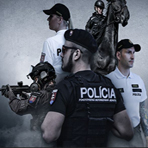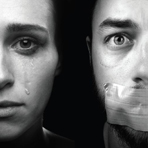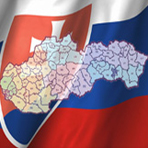5. Corruption as a kind of crime
Basic determinants of corrupt behaviour
During the last decades, corruption became one of the most serious and the most dangerous social phenomenons and perception thereof reaches global dimensions. Corrupt behaviour consists in accepting a bribe, giving a bribe or any other behaviour with respect of entities, whom have been entrusted authorities in public or private sectors with obligations directly related to their positions and aimed at winning privileges for which there is no legal entitlement.
There are at least two parties involved in corruption offences, creating elements of mutual liability and benefit. Examination, detection, documentation and investigation of corruption offences are specific, different from other types of criminal activities. The difference is, in particular, in the manner of committing the criminal offences, concealment and forms thereof. Unlike other criminal offences, where the injured party is interested in detection of the offence, corruption offences are committed with consent of and benefit for both parties involved.
This specific relationship, in which none of the involved parties are regarded as injured, or the victim of the criminal offence obstructs criminal proceedings led by law enforcement authorities to prevent them from learning about commitment of the criminal offence. A corruption offence exists in a form of specific agreement, which is beneficial for both parties involved. In terms of criminal law, none of the involved parties is injured by the corruption and, therefore, none of the parties involved is interested in detection of the corrupt behaviour. Infiltration between parties of a corruption relationship is very difficult and, as a rule, it is revealed only if one of the parties becomes dissatisfied with the criminal activities.
Considering comprehensive approach to corruption, the victim is not personified, instead, the whole society is injured. Despite the fact that the theme of corruption is widely discussed, specific expressions of corruption are difficult to prove. Most of corrupt transactions are carried out in secrecy and information which could contribute to revealing corrupt practices are very limited. The disguise and, at the same time, consensual nature of corruption offences, in general, make the process of detection and investigation of those criminal offences even more difficult.
Specific aspects of corruption offences
Corruption as a type of criminality occurs in various forms and expressions, which, besides a large amount of latency, is characterised by high variability. The natural consequence of the development and modernization of the society, new methods and forms of corrupt practices, as well as concealment of corruption emerged. The substance of these offences is that certain entity (corruptee) wins an unauthorised advantage, in particular, through misuse of his/her social position for the benefit of other specific entity (corruptor) to the detriment of other injured entities. This negative punishable phenomenon deepens social inequality, disturbs the principle of equality, basic principles of democracy and contributes to weakening the citizens’ trust in legally consistent state.
A corrupt relationship is also substantially determined by the latest amendment of the criminal law regulating sanctions for corruption. Considering bodies of corruption offences, the existing criminal law makes it possible to equally punish not only the one who promises, gives or offers a bribe but also the one who accepts the bribe, asks for a bribe or solicits a promise of a bribe. Thus, each of the parties involved is a potentially accused of a criminal offence. Besides the basic parties, the corruptee and the corruptor, there can also be other persons, intermediaries, participating in the criminal activity, namely in trading in influence. When defining the criminal liability of the intermediary it is important to find out whether the intermediary knew about the substance of the corrupt behaviour between the parties to the corruption relationship or whether the intermediary was influenced by a disguise a thus could not know about the substance of the transaction.
Analysis of the examined corruption offences shows that the most dangerous forms of corruption offences are those resulting in organized penetration in structures of regulatory and decision-making authorities, to influence fundamental decision-making processes in the state policy. These forms of corruption differ from one another not only by the amount and value of given bribes or services, material or other supplies provided in return, the origin of used funds and the fact that bribery is only an attendant phenomenon or an instrument for committing other criminal activity. In this case, rather than the objective, corruption is an instrument for committing other criminal activity. Consequences of those offences are far-reaching; such offences enable the corrupting person to compromise influential persons and to bind them to provide further services and to extent the scope of their influence.
Specific features of corruption offences
Methods of committing corruption offences and concealing methods directly related thereto are specific, different from other types of criminal activities. Corruption offences are committed by knowledgeable persons with decision-making, regulatory or other control authority in specific areas of social activity. Offences are committed in form of a corruption agreement, where each of the participants is interested in a consistent and long-term concealment of the agreement. Various legends of formal nature are used to conceal the true nature of the purpose of the supplies/services provided under those agreements.
Specific methods of committing corruption offences and related methods of concealment reflect the existing high level of latency of corruption offences. Latency of corruption is the reason preventing detection of such criminal offences directly during preparation or committing thereof and not allowing focusing on specific terms and circumstances necessary for identification and detection thereof. All these facts significantly determine and complicate the process of detection of corruption offences, characterized by the necessity of using more offensive methods and specific instruments and measures, different from instruments and measures used for the purpose of detection and proving of other types of criminal offences.
The above-mentioned phenomenon is also closely related to defining the scope of spreading or development phases of various corruption forms in the society. Random and unorganized corruption agreements between mutually unknown entities can, in certain development phase, ripen from a marginal social phenomenon to an economic and political problem. Through development, microsocial factors of corruption become organized, i.e., keep changing and extend their relationship structure. Corruption penetrates the macrosocial level, becoming a complex system of relations of various nature in both national and international aspects. An effort to control the relations and to eliminate their widely spread forms requires a consistent application of legitimate concepts of the criminal law by law enforcement authorities, whose key objective is to guarantee detection and investigation of corruption offences.
Elimination of corruption offences is also determined by subjective factors, such as legal awareness of individuals who are members of the society, their ethical principles, integrity, interest in public issues and willingness to participate in reporting of corruption offences. It is in particular the process of detection and investigation of corruption offences where whistle blowers play an important role. A special treatment of whistle blowers in corruption offences reflects their irreplaceable role in providing substantial information about corruption offences which would otherwise remain concealed and the offenders would remain unpunished. Terms of protection of those reporting corruption and other anti-social activities in the Slovak Republic in relation to protection in employment relations are regulated by Act No. 54/2019 Coll. on the Protection of Persons Reporting on Anti-Social Activities and on Amendments to Certain Laws.
Please remember that:
- Unlike other criminal offences, where the injured party is interested in detection of the offence, corruption offences are committed with approval and benefit for both parties involved.
- The disguise and, at the same time, consensual nature of corruption offences make the process of detection and investigation of these offences even more difficult.
- Considering bodies of corruption offences, it is possible to punish not only the one who promises, gives or offers a bribe, but also the one who accepts the bribe, asks for a bribe or solicits a promise of a bribe. Thus, each of the parties involved is potentially accused of a criminal offence.
- Besides the basic parties, the corruptee and the corruptor, there can also be other persons, intermediaries, participating in the criminal activity.
- In the process of detection and investigation of corruption offences an important role is played by whistle blowers from all areas of public life and from individual citizens.











